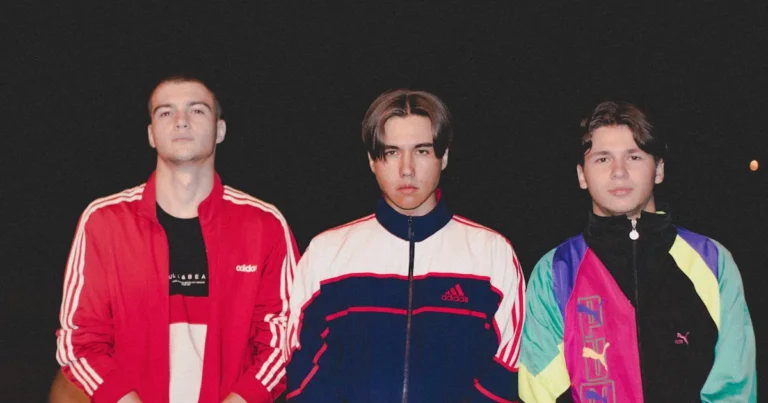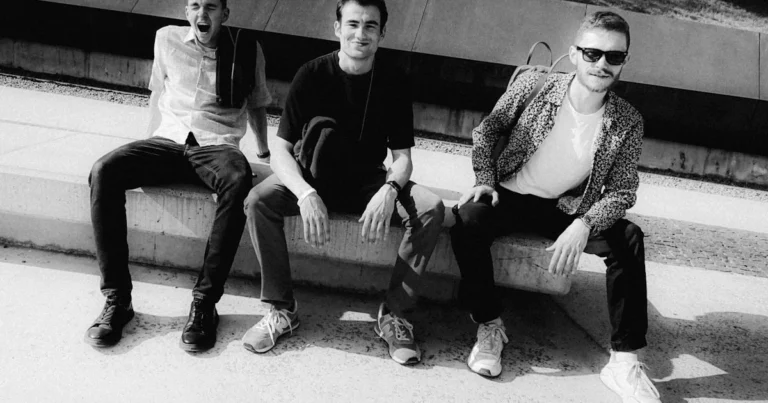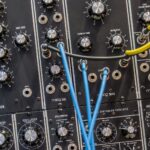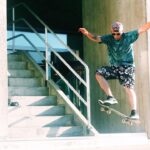Support our educational content for free when you purchase through links on our site. Learn more
Are Tears for Fears Still Friends? The Untold Story (2025) 🎹
If you grew up humming Everybody Wants to Rule the World or felt the haunting pulse of Mad World, you’ve probably wondered: Are Tears for Fears still friends? Behind the synth-pop anthems and chart-topping hits lies a story of friendship tested by fame, creative clashes, and personal struggles. But spoiler alert: the duo’s journey from bitter split to heartfelt reunion is as compelling as their music.
In this article, we peel back the curtain on Roland Orzabal and Curt Smith’s complex relationship—how they met, why they parted ways, and what brought them back together. We’ll reveal surprising insights from interviews, fan perspectives, and their recent albums that show how their bond has evolved. Curious about their current friendship status and what it means for the future of Tears for Fears? Keep reading—you might just find the answer more inspiring than you expected.
Key Takeaways
- Tears for Fears formed in the early 1980s and quickly became synth-pop icons with hits like Shout and Everybody Wants to Rule the World.
- The duo split in 1991 due to creative differences, personal challenges, and management issues, leading to nearly a decade of silence.
- They reunited around 2000, releasing new albums and touring together, with their friendship described as stronger than ever.
- Their recent work reflects maturity and renewed creative energy, blending classic synth-pop with contemporary themes.
- Fans and critics alike celebrate their reunion as a symbol of hope and resilience in both music and friendship.
Ready to explore their fascinating story and maybe even add some Tears for Fears classics to your collection? Check out these shopping links:
- 👉 Shop Tears for Fears Vinyl & CDs on Amazon: Vinyl & CDs
- Explore Synth Pop Classics: 80s Synth Pop Collection
- Discover Iconic Synth Pop Songs: Iconic Synth Pop
Table of Contents
- ⚡️ Quick Tips and Facts
- 🎶 The Genesis of a Duo: Roland Orzabal & Curt Smith’s Early Days and Musical Roots
- 🎢 The Rollercoaster Ride: Highs, Lows, and the Infamous Tears for Fears Split
- 💔 Unpacking the Discord: Why Did Roland and Curt’s Partnership Fracture?
- 🤝 The Long Road Back: Tears for Fears’ Reconciliation and Reunion Albums
- 🤔 Are They Still Friends Today? A Deep Dive into Roland and Curt’s Current Relationship Dynamic
- 🏡 Beyond the Studio: Personal Lives, Shared Experiences, and the Enduring Bond
- ✨ The Creative Alchemy: How Friendship (or Friction) Fuels Tears for Fears’ Music
- 🎤 On the Road Again: Touring Dynamics and the Live Performance Vibe
- 🔮 The Future of Tears for Fears: What’s Next for the Iconic Duo?
- 💖 Fan Perspectives: What the Synth Pop Community Thinks About Their Bond
- ✅ Conclusion
- 🔗 Recommended Links
- ❓ FAQ
- 📚 Reference Links
⚡️ Quick Tips and Facts
Welcome to the ultimate deep dive on the question that’s been buzzing in synth pop circles: Are Tears for Fears still friends? If you’ve ever wondered about the personal dynamics behind the iconic duo of Roland Orzabal and Curt Smith, you’re in the right place. At Synth Pop™, we’ve been fans since the early ’80s, and here’s a quick snapshot before we unpack the full story:
| Aspect | Rating (1-10) | Notes |
|---|---|---|
| Musical Chemistry | 10 | Their songwriting synergy remains legendary, even after decades of ups and downs. |
| Personal Relationship Status | 7 | Complex history with a notable split but a heartfelt reunion and ongoing collaboration. |
| Public Communication | 8 | Open about their past struggles and current friendship in interviews and documentaries. |
| Touring Partnership | 9 | Still touring together, bringing classic and new material to fans worldwide. |
| Creative Output | 8 | Recent albums show a matured, evolved sound with fresh energy. |
Key facts:
- Tears for Fears formed in 1981 in Bath, England, by Roland Orzabal and Curt Smith.
- They split acrimoniously in 1991 but reunited around 2000.
- Their latest albums (The Tipping Point in 2022 and Songs for a Nervous Planet in 2024) showcase their renewed partnership.
- Despite past tensions, they describe their current relationship as strong and creatively fulfilling.
- The duo’s story is a rollercoaster of friendship, conflict, and reconciliation — much like the emotional depth of their music.
Curious how it all unfolded? Let’s rewind and explore their journey in detail.
🎶 The Genesis of a Duo: Roland Orzabal & Curt Smith’s Early Days and Musical Roots
Before Tears for Fears became a household name, Roland and Curt were just two teenagers in Bath, England, bonding over music and shared ambitions. Their friendship began in the late 1970s, when they played together in early bands like Duckz and Graduate. This formative period laid the groundwork for their unique blend of synth-pop, new wave, and pop rock that would later define their sound.
Synth Pop Roots and Influences
- Inspired by the burgeoning synth scene of the late ’70s and early ’80s, they embraced electronic instruments and layered production.
- Influences included David Bowie, Roxy Music, and the burgeoning UK synth scene.
- Their early work, especially on The Hurting (1983), reflected personal struggles and psychological themes, resonating deeply with fans.
“We were just two kids trying to make sense of the world through music,” Curt Smith once said in an interview with BBC Music.
If you want to explore their early synth-pop classics, check out our Iconic Synth Pop Songs category for deep dives on tracks like Mad World and Change.
🎢 The Rollercoaster Ride: Highs, Lows, and the Infamous Tears for Fears Split
The 1980s were a golden era for Tears for Fears, with massive hits like Shout and Everybody Wants to Rule the World dominating charts worldwide. But behind the scenes, tensions simmered.
Key Moments Leading to the Split
- After the success of The Seeds of Love (1989), the duo’s working relationship frayed.
- Differences in creative control and personal priorities caused friction.
- Roland’s perfectionism clashed with Curt’s desire for a slower pace, especially as Curt dealt with personal issues like divorce.
- Their manager’s bankruptcy and legal troubles added financial stress.
By 1991, the split was official, with Roland continuing Tears for Fears as a solo project. This period was marked by silence and distance, with Curt relocating to the US to find his own identity.
💔 Unpacking the Discord: Why Did Roland and Curt’s Partnership Fracture?
The split wasn’t just a headline; it was a complex emotional and professional breakdown. Here’s what we know from interviews and insider accounts:
- Creative Differences: Roland’s meticulous production style demanded long hours and perfection, which Curt found exhausting.
- Lifestyle Clashes: Curt’s “jetsetting” and desire to slow down conflicted with Roland’s relentless work ethic.
- Management Issues: Their manager Paul King’s bankruptcy and later fraud conviction (source: Wikipedia) created distrust and instability.
- Personal Struggles: Curt’s divorce and need for personal space contributed to the growing divide.
Despite these challenges, both have expressed respect for each other’s talents, even during the cold war years.
🤝 The Long Road Back: Tears for Fears’ Reconciliation and Reunion Albums
The story took a hopeful turn around 2000 when Curt reached out to Roland after nearly a decade of silence. Their reunion wasn’t just a nostalgic gesture—it was a creative rebirth.
Reunion Highlights
- 2004’s Everybody Loves a Happy Ending marked their first album together in over a decade.
- The album was warmly received by fans and critics, signaling that the magic was still there.
- They resumed touring, often with a supporting band including Charlton Pettus and others.
- Their 2022 album The Tipping Point was hailed as a mature, relevant work reflecting their personal and global experiences.
- Songs for a Nervous Planet (2024) further cemented their comeback with a mix of live and new studio tracks.
Roland Orzabal said in 2021: “If there is a God, this is what he put us on Earth to do.”
🤔 Are They Still Friends Today? A Deep Dive into Roland and Curt’s Current Relationship Dynamic
So, what’s the real deal today? Are Tears for Fears still friends, or is it all just professional courtesy?
What We’ve Learned
- Both openly acknowledge their past conflicts but emphasize growth and forgiveness.
- Curt Smith, now based in the US, and Roland Orzabal, in the UK, maintain close communication.
- Their collaboration is described as “the best it’s ever been” in recent interviews (Express).
- They’ve overcome trust issues with management and record labels by working more independently.
- Their shared history and mutual respect fuel their creative partnership.
In short: ✅ They are friends, collaborators, and creative partners — with a past that makes their present all the more meaningful.
🏡 Beyond the Studio: Personal Lives, Shared Experiences, and the Enduring Bond
Their friendship isn’t just about music. It’s about decades of shared experiences, personal growth, and mutual support.
Anecdotes and Insights
- Roland dedicated The Tipping Point title track to his late wife, showing vulnerability that Curt supported.
- Curt’s move to the US was a quest for identity, but he credits Roland for helping him reconnect with himself and music.
- They’ve weathered family changes, personal losses, and the pressures of fame together.
- Their bond is like a vintage synth: sometimes temperamental but capable of producing timeless sounds.
Fans often comment on their warm stage banter and genuine smiles during live shows, a testament to their enduring connection.
✨ The Creative Alchemy: How Friendship (or Friction) Fuels Tears for Fears’ Music
The tension and harmony between Roland and Curt have always been the secret sauce behind Tears for Fears’ music.
Creative Dynamics
- Friction as Fuel: Their disagreements pushed them to refine ideas and challenge each other.
- Complementary Strengths: Roland’s production wizardry and Curt’s melodic sensibility balance perfectly.
- Evolution Over Time: Their recent work reflects maturity, blending past synth-pop roots with contemporary themes.
- Collaborative Songwriting: They now co-write with a trusted circle, including Charlton Pettus, to keep fresh perspectives.
This dynamic is a case study in how complex friendships can produce art that resonates across generations.
🎤 On the Road Again: Touring Dynamics and the Live Performance Vibe
Touring together after years apart can be tricky, but Tears for Fears make it look effortless.
Touring Facts
- Their current touring band includes Charlton Pettus (guitar/keys), Douglas Petty (keys), and Jamie Wollam (drums).
- Live shows blend classic hits with new material, pleasing longtime fans and newcomers alike.
- Roland and Curt’s onstage chemistry is palpable, with playful interactions and shared moments of nostalgia.
- They’ve adapted to modern touring challenges, including pandemic restrictions, by incorporating live-streamed performances.
If you want to catch their live magic, check tour dates on their official website.
🔮 The Future of Tears for Fears: What’s Next for the Iconic Duo?
Looking ahead, what can fans expect from Tears for Fears?
- They’ve expressed interest in continuing to write and record new music, building on the momentum of Songs for a Nervous Planet.
- Plans for more touring and festival appearances are in the works.
- Both are exploring solo projects but remain committed to the duo.
- Their story suggests a future rich with collaboration, creativity, and perhaps more surprises.
As Curt Smith said, “We’re not done yet. The best is still to come.”
💖 Fan Perspectives: What the Synth Pop Community Thinks About Their Bond
The synth pop community has watched Tears for Fears’ journey with fascination and affection.
- Fans appreciate their honesty about struggles and reconciliation.
- Many see their reunion as a symbol of hope — that friendships can survive even the toughest storms.
- Online forums and fan clubs buzz with excitement over new releases and tour announcements.
- Some fans share personal stories of how Tears for Fears’ music helped them through difficult times, making the duo’s friendship feel even more meaningful.
At Synth Pop™, we’ve heard from fans who say the duo’s dynamic adds emotional depth to every note they play.
✅ Conclusion
After tracing the fascinating journey of Tears for Fears—from their teenage beginnings in Bath, through chart-topping synth-pop anthems, a painful split, and an inspiring reunion—one thing is crystal clear: Roland Orzabal and Curt Smith are not just bandmates; they are lifelong collaborators and friends who have weathered storms to create timeless music.
Their story is a testament to the complexities of creative partnerships. The positives? A rich catalog of emotionally resonant, genre-defining music; a renewed friendship that fuels fresh creativity; and a commitment to their fans through touring and new releases. The negatives? Years of silence, personal struggles, and professional hurdles that could have ended their legacy.
But here’s the kicker: Tears for Fears have emerged stronger, proving that true friendship and artistry can survive even the toughest tests. So, are they still friends? ✅ Absolutely. Their current relationship is marked by mutual respect, shared history, and a passion for music that keeps them connected.
If you’ve ever wondered whether the magic behind Everybody Wants to Rule the World still exists, the answer is a resounding yes. And with albums like The Tipping Point and Songs for a Nervous Planet, the duo is showing us that their best work may still be ahead.
🔗 Recommended Links
Ready to dive deeper into Tears for Fears and their world? Here are some must-have resources and shopping links:
- Tears for Fears Official Website: https://www.tearsforfears.com/
- Explore Tears for Fears on Amazon Music: Amazon Music Search
- Vinyl and CD Collections:
- Books on Tears for Fears and 80s Synth Pop:
❓ FAQ
What are Tears for Fears most popular songs and albums?
Tears for Fears have an impressive catalog of hits, including “Shout,” “Everybody Wants to Rule the World,” “Mad World,” and “Sowing the Seeds of Love.” Their albums Songs from the Big Chair (1985) and The Seeds of Love (1989) are considered synth-pop classics, with The Hurting (1983) marking their emotionally raw debut. Their recent albums, The Tipping Point (2022) and Songs for a Nervous Planet (2024), continue to showcase their evolving sound.
How did Tears for Fears get their name and what inspired their music?
The band’s name was inspired by psychologist Arthur Janov’s book Prisoners of Pain, which explores primal therapy. Roland and Curt were fascinated by the idea of confronting emotional pain and trauma, themes that permeate their early work. Their music blends introspective lyrics with synth-driven melodies, reflecting personal and societal struggles.
Are Roland Orzabal and Curt Smith still making music together as Tears for Fears?
Yes! After a decade-long split, Roland and Curt reunited around 2000 and have been collaborating ever since. They released Everybody Loves a Happy Ending (2004), The Tipping Point (2022), and Songs for a Nervous Planet (2024). They continue to write, record, and tour together, proving their creative partnership is alive and thriving.
What is the story behind Tears for Fears’ breakup and reunion over the years?
The split in 1991 was due to creative differences, personal challenges, and management issues. Curt moved to the US to find his own identity, while Roland continued the band solo. Their reunion began with a fax from Curt after nearly a decade of silence, leading to renewed collaboration and friendship. They now describe their relationship as stronger than ever.
What influence did Tears for Fears have on the synth pop music genre in the 80s?
Tears for Fears were pioneers in blending synth-pop with emotionally complex lyrics and lush production. Their work influenced countless artists and helped define the sound of the 1980s. Hits like Shout and Everybody Wants to Rule the World remain staples of the genre and continue to inspire new generations of musicians.
Can I still see Tears for Fears perform live in concert, and where are they touring?
Absolutely! Tears for Fears continue to tour internationally, often performing a mix of classic hits and new material. Their official website and social media channels provide up-to-date tour dates and ticket information. Fans rave about their energetic performances and the palpable chemistry between Roland and Curt on stage.
How has Tears for Fears’ music evolved over the years, and what can fans expect from their latest releases?
Their early music was raw, introspective, and synth-heavy, reflecting personal and psychological themes. Over time, their sound has matured, incorporating rock, pop, and contemporary influences. Recent albums like The Tipping Point and Songs for a Nervous Planet address global issues and personal growth, blending classic synth textures with modern production.
📚 Reference Links
- Tears for Fears – Wikipedia: https://en.wikipedia.org/wiki/Tears_for_Fears
- Express Interview on Tears for Fears Reunion: https://www.express.co.uk/entertainment/music/1579987/Tears-For-Fears-stars-split-Roland-Orzabal-Curt-Smith-new-music-album
- Alumni Voices: Will Gregory on Tears for Fears/Goldfrapp: https://alumnivoices.co.uk/2024/04/04/will-gregory-tears-for-fears-goldfrapp/
- Tears for Fears Official Website: https://www.tearsforfears.com/
- Synth Pop™ Category: https://synpop.com/category/80s-synth-pop/
- Iconic Synth Pop Songs: https://synpop.com/category/iconic-synth-pop-songs/
We hope this comprehensive guide has quenched your curiosity about Tears for Fears’ friendship and creative journey. Whether you’re a longtime fan or new to their sound, their story is a powerful reminder that music and friendship can endure, evolve, and inspire — just like the synth lines that defined a generation. 🎹✨




